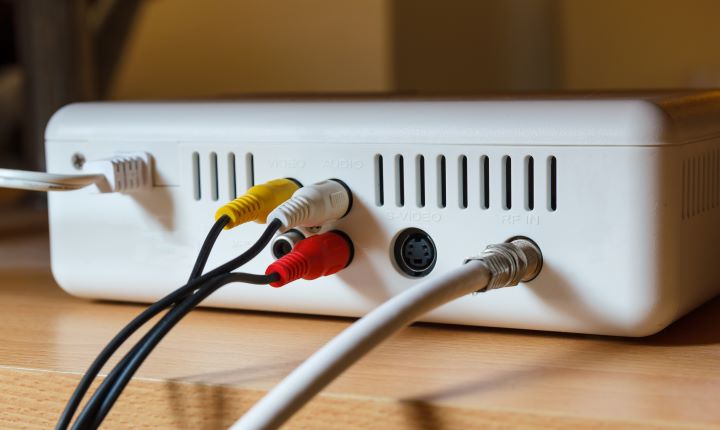Unleash Your Projector's Potential: Essential Tips for Optimal Ultra-Short Throw Projector Setup and Performance
Want to enhance your home theater experience with an ultra-short throw projector? For optimal setup, proper projector placement and choosing a high-quality screen designed for best image quality are crucial. Adjusting projector settings, such as keystone correction, can significantly improve sharpness. For even better results, consider the screen's ambient light suppression performance, especially in well-lit rooms.

Unleash Your Projector’s Potential: Essential Tips for Optimal Ultra-Short Throw Projector Setup and Performance
Ultra-short throw projectors can turn tight spaces into large displays with minimal shadowing and clean cable runs. To get the most from them, focus on geometry, screen compatibility, lighting, and audio. A few millimeters of placement changes can transform focus uniformity, reduce image bowing, and improve edge clarity. Pair that precision with a suitable ambient light environment and you’ll achieve crisp text, stable color, and consistent brightness for both entertainment and work use.
Conference Room Projector Setup
Start with the viewing distance and desired image size. A practical guide is image width equal to roughly one-quarter of the farthest viewer’s distance for detailed content like spreadsheets. For small rooms, 100–120 inches diagonal is common. Mount or place the unit so the lens aligns with the screen’s bottom bezel per the manufacturer’s throw chart; even slight deviations can cause keystone and focus falloff. Minimize digital keystone—use physical leveling, adjustable feet, or wall mounts to keep the image perfectly rectangular. Ensure ventilation clearance, and avoid placing tall soundbars that can intrude into the light path.
Conference Room Projector Solutions
UST works well in rooms where presenters stand close to the screen. Use an ambient or ceiling light rejecting (ALR/CLR) screen designed for UST optics to maintain contrast under lights. Target sufficient brightness for your environment: brighter rooms typically benefit from higher-lumen laser models. For connectivity, prioritize HDMI with adequate bandwidth, reliable wireless casting for guests, and simple cable routing. Network control and scheduled on/off can streamline daily use. If needed, engage local services for mounting and calibration in your area to ensure alignment, color balance, and clean cable management.
K Ultra Short Throw Projector
Many UST models marketed with “4K” use pixel-shifting to display UHD detail; check the native panel resolution and processing method. Higher addressable detail helps with fine text and dense dashboards. Look for HDR10/HLG support, but remember HDR impact depends on peak brightness and tone-mapping. Color management features such as CMS, grayscale controls, and preset color gamuts are helpful for accurate presentations and media. For interactive boards or casual gaming, input lag and motion handling matter. Confirm HDMI version compatibility with your sources and consider eARC if external audio is part of your setup.
Portable Ultra Short Throw Projector
Portable UST units are convenient for flexible spaces, but they typically offer lower brightness and smaller maximum images than full-size models. They perform best in dim rooms and on smooth, matte screens. Because the throw angle is steep, any surface ripples or wall textures become visible; a flat screen helps. Use stable, low furniture to maintain a consistent lens-to-screen gap, and pre-measure distance so setup is repeatable. Keep a compact, high-quality HDMI cable and a travel power strip to reduce connection hassles. A padded case protects the optics from dust and knocks during transport.
Multiple Projector Video Wall
Creating a multi-projector display requires meticulous alignment, uniform brightness, and edge blending. While UST can be used, its extreme angles make blending more challenging than with standard or short-throw lenses. If you attempt a UST-based wall, ensure identical models, matched lamp or laser hours, and consistent color temperature. Use test patterns for geometry, then fine-tune brightness and gamma to eliminate seams. Specialized blending software and careful screen selection (rigid, perfectly flat panels) are important for stable results. For many spaces, a single larger UST image or direct-view display may be simpler to maintain.
Practical tips for performance and longevity
- Screen selection: Choose a UST-specific ALR/CLR screen for brighter rooms; use a smooth matte screen in darker environments.
- Light control: Dim overhead lights near the screen, add window treatments, and avoid light sources facing the screen.
- Placement: Follow the throw chart; micro-adjust height and distance to remove bowing and maintain edge-to-edge focus.
- Geometry: Level the chassis first, then use minimal digital correction. Excess keystone reduces detail.
- Focus and uniformity: Check all four corners and center with a fine grid; readjust surface flatness if needed.
- Firmware and sources: Update firmware, set output to the projector’s native timing, and use certified high-bandwidth HDMI cables.
- Audio: Consider external speakers or a low-profile soundbar that doesn’t block the light path; eARC can simplify cabling.
- Maintenance: Keep vents clear, dust the intake area, and ensure adequate airflow to avoid thermal throttling.
- Safety: Avoid looking into the lens; set child and pet-safe furniture placements around the beam path.
Conference Room Projector Solutions: room-by-room ideas
Small huddle rooms benefit from 90–100 inch images and quiet units placed on credenzas beneath ALR screens. Mid-sized rooms often need 110–120 inches, brighter laser engines, and straightforward BYOD casting. In training spaces, consider networked control for scheduled power and basic color calibration across multiple rooms for visual consistency. For leased offices, freestanding UST cabinets preserve walls and simplify relocation.
Conference Room Projector Setup: checklist
- Confirm screen height so seated participants maintain clear sight lines.
- Verify cable reach and strain relief before finalizing placement.
- Label inputs and set a default source to reduce meeting delays.
- Store a printed alignment grid and quick-start notes in the room.
Portable Ultra Short Throw Projector: travel-ready habits
Pre-mark projector and screen positions with small tape tabs for recurring events. Pack microfiber cloths for dust, a compact surge protector, and a backup HDMI cable. Test with the actual laptop or media player you’ll use, and save color and geometry profiles where available so you can revert to known-good settings quickly.
Multiple Projector Video Wall: when to reconsider
If the space is bright and critical content spans across seams, consider a single larger image instead of a tiled blend to avoid visible edges and color mismatches. When a multi-projector wall is necessary, keep ambient light consistent across the wall and match screen modules to prevent panel bowing that complicates alignment.
K Ultra Short Throw Projector: calibration notes
Set color temperature to a neutral target and verify grayscale tracking with a simple test slide. If your model includes CMS, gently adjust primaries and secondaries to minimize hue shift without over-correcting. Store a day-mode and a night-mode profile so you can adapt to lighting changes without redoing the setup from scratch.
Final thoughts
Ultra-short throw projectors reward careful setup. The right screen, precise placement, controlled lighting, and sensible connectivity choices deliver a stable, high-impact image. Whether you’re outfitting a meeting room, staging a portable presentation, or planning a large display, consistent geometry and calibration practices make the difference between acceptable and exceptional results.




